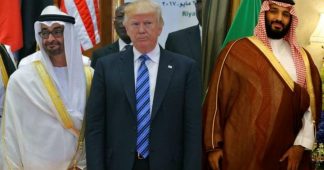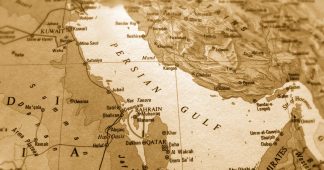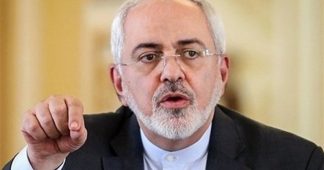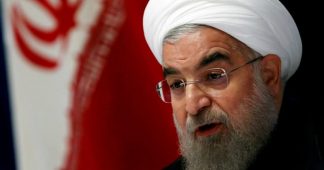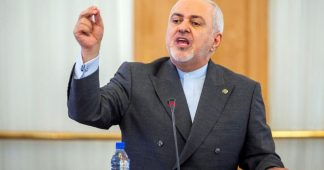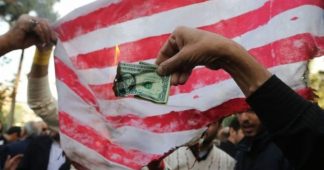By Dina Esfandiary
Sep. 15, 2021
Of the nineteen hijackers on the four planes that crashed into the north and south towers of the World Trade Centre, the Pentagon and a field in Pennsylvania, all but two were from the Gulf states: fifteen from Saudi Arabia and two from the United Arab Emirates (UAE). The attacks and their aftermath upset a status quo of smooth political, economic and security relations between the U.S. and its Gulf Arab partners. As the U.S. turned its overly ambitious gaze toward removing Saddam Hussein and advancing George W. Bush’s “freedom agenda”, it upended finely balanced regional dynamics, increased Gulf states’ sense of insecurity and spurred the slow erosion of their confidence in Washington’s steady support. The reverberations of these Bush-era choices shape U.S.-Gulf relations to this day.
At the heart of the United States’ ties with the Gulf Arab states is its relationship with Saudi Arabia, described by scholar and former U.S. government official Jeremy Shapiro as a “security-for-oil quid pro quo” under which “the United States has served as Saudi Arabia’s last – and sometimes first – line of defence against external threats to the kingdom”. U.S. security assurances to Gulf state partners arguably date back to the 1940s, and they assumed their modern cast in President Jimmy Carter’s 1980 State of the Union address, when he stated that: “An attempt by any outside force to gain control of the Persian Gulf region will be regarded as an assault on the vital interests of the United States of America, and such an assault will be repelled by any means necessary, including military force”. Although the U.S. has never afforded the Gulf Arab states the same legally binding commitments it gives its closest treaty allies, these political assurances formed the backdrop of wide-ranging relations that embraced trade, arms sales and basing rights for U.S. forces in the region.
Perhaps the most significant inflection point in U.S.-Gulf relations that preceded the 11 September 2001 attacks was Iraq’s invasion of Kuwait in 1990. Up to that point, Gulf Arab leaders had kept a wary eye on the U.S. profile in the region – not wanting the security partnership to create the perception that they had welcomed Western interlopers or to produce a public backlash. But in the face of Saddam Hussein’s aggression, those concerns evaporated almost overnight. Leaders welcomed the presence of U.S. troops on Saudi Arabian and Kuwaiti soil as a U.S.-led military coalition jumped in to expel Iraqi forces. From the Gulf leaders’ perspective, the 1991 war helped usher in an era of relative stability, even as their dependence on the U.S. for their security deepened while legally binding security guarantees remained out of reach.
This abrupt ramping-up of the U.S. military presence, however, brought the reaction that leaders had previously feared, particularly among religious elites – state-affiliated ulama and Islamists, including those who vocally opposed the royal family’s rule in Saudi Arabia. One of the most prominent public objectors was Osama bin Laden, a Saudi Arabian citizen from a wealthy family, who had fought against the Soviet occupation of Afghanistan. Bin Laden now turned his sights toward Western troops stationed in Muslim lands, as well as inward at those abetting what he saw as U.S. imperial designs. In 1996, in his first major speech, bin Laden explicitly decried this presence, laying the planks for the platform on which he would build a significant following and establish al-Qaeda
The 9/11 attacks, planned and carried out by al-Qaeda, dramatically changed the U.S. public’s attitudes toward the Middle East and Washington’s Gulf Arab partners in particular. Part of the public, along with some political leaders, mainly in Congress, suspected these states of having enabled the attacks. But more consequentially the attacks created the circumstances for two policy shifts that reflected Washington’s newfound desire to reshape the region in a more ideologically familiar mould and its misplaced conviction that it could do so.
One was the 2003 invasion of Iraq, which the U.S. pursued despite multiple warnings from its regional partners that removing the regime would create a vacuum that Tehran would readily exploit. Since Iran’s revolution in 1979, they had feared that the Islamic Republic, run by Shiite clergy, would incite Shiites in Arab countries to rebellion in a grab for regional hegemony. Prior to the Iraq invasion, they considered Iraq to be within their own – Sunni – sphere of influence, notwithstanding their fraught relationship with Saddam Hussein. Afterward, they saw it falling squarely within Iran’s orbit. A former U.S. official said of the Saudis at the time: “They warned the Bush administration that invading Iraq would unleash Iran. They were frustrated when their warnings were ignored”. As Tehran’s power grew, and along with it the capacity to project its influence around the region, Saudi and Emirati assessments led these states to focus almost single-mindedly on containing and rolling back an ever-growing Iranian threat.
The other attempt at reshaping the region that the 11 September attacks unleashed was the Bush administration’s freedom agenda. While Bush himself had run on a platform that suggested deep scepticism of grand idealistic projects in U.S. foreign policy, the attacks empowered a cadre within his administration that believed the U.S. should try to rework the Middle East more in its image. In late 2003, President George W. Bush unveiled what he described as “a forward strategy of freedom in the Middle East”. It was a vision of bringing about change in the region through the imposition of U.S. values, including with respect to democray and human rights. In a speech at the National Endowment for Democracy, Bush said:
“Sixty years of Western nations excusing and accommodating the lack of freedom in the Middle East did nothing to make us safe – because in the long run, stability cannot be purchased at the expense of liberty. As long as the Middle East remains a place where freedom does not flourish, it will remain a place of stagnation, resentment and violence ready for export.”
The change in U.S. rhetoric toward the region posed a problem for the Gulf states on two levels. First, the very idea of a more ideological U.S. foreign policy that aimed to spread democratic values to their neighbourhood proved, in their eyes, that the U.S. did not view them as equal partners. Rather, they saw it as revealing Washington’s perception of them as countries that needed to be told what to do. That included shifting away from autocratic rule, which Washington was now arguing had bred Islamist militancy and assisted the rise of transnational jihadists like bin Laden.
Secondly, Gulf Arab leaders feared what President Bush’s stated desire to spread democracy in the region would mean for their own survival. The change in U.S. rhetoric went against Washington’s longstanding approach to promoting political stability in the Arab world by supporting the status quo even when it involved providing cover for strongly authoritarian governments. U.S. visions of democracy could hardly be squared with the political ascendancy of dynastic monarchies that ruled with a heavy hand. Although, in reality, the Bush administration pursued the freedom agenda selectively and largely gave up after Hamas won Palestinian legislative elections in early 2006, at least some Gulf officials initially believed that Bush’s foreign policy targeted them directly.
From the perspective of the Gulf Arab states, then, the Bush administration’s policy whiplash following the 9/11 attacks was a double betrayal: the U.S. had targeted their very systems of government and unleashed the power of their worst enemy, Iran. And it taught them that a U.S. partner they had thought reliable was capable of being fickle. In response, to insulate themselves from what they thought the freedom agenda might bring, they eagerly seized on the opportunities the U.S.’s new counter-terrorism effort offered. Pursuit of jihadists was in their own interest, of course, but it also allowed them to stay in Washington’s good graces.
While relations with the U.S. did not remain at the low ebb they reached in the years immediately following the 11 September attacks, the Gulf Arab states found periodic reasons to refresh the anxiety that emerged at that time. President Barack Obama’s administration certainly gave them several. Dismayed by the Iraq invasion and the Bush administration’s subsequent mismanagement of post-war stabilisation and reconstruction efforts, the Gulf Arab states cautiously welcomed Obama’s 2008 election, as they hoped the new president would put an end to the turbulence of the Bush years. But they were soon disappointed. The Obama administration signalled that it aimed to draw down the U.S. military presence in the region and widen the focus of its foreign policy to Asia. Yet the counter-terrorism partnership stayed strong.
When the 2011 Arab uprisings erupted, after initially sending mixed signals, the administration sided with the protesters, advising long-time U.S. partner President Hosni Mubarak in Egypt to step down. The speed and ease with which the U.S. abandoned Mubarak, in particular, frightened and frustrated Gulf Arab leaders. The administration’s decision to pursue the Iran nuclear deal further soured relations as Gulf partners worried that the agreement would further unleash Iran in the region through the release of frozen funds and new income following the removal of international sanctions. When Yemen started to unravel in 2014-2015, Saudi Arabia argued that the Huthi insurgents who had ousted Washington’s partner, President Abed Rabbo Mansour Hadi, from Sanaa owed their success to Iran, while the UAE played up the resurgence of al-Qaeda’s affiliate in southern Yemen in the chaos of civil war. On these two matters, they had the Obama administration’s ear, and its support, but even when the U.S. backed their coalition’s armed push into Yemen they seemed hardly reassured of Washington’s strategic commitment to them.
Gulf Arab leaders then nourished some hope that President Donald Trump might prove, in their view, a more reliable partner, but were again let down. At first, they were heartened by Trump’s visit to Riyadh, his eschewing of any democracy agenda for the region, his renewed emphasis on counter-terrorism and his abandonment of the Iran nuclear deal; they also welcomed Trump’s professions of U.S. support for the Saudi-led war effort in Yemen, with which the Obama administration had grown impatient. Yet they saw as tepid the Trump administration’s largely rhetorical response to the 2019 attacks on Saudi Arabia’s oil infrastructure and Gulf shipping, apparently by Iranian hands, notwithstanding its deployment of an additional 2,800 troops to Saudi Arabia in the aftermath. They also found that Trump was keen to shift the financial burden of U.S. protection to them, demanding that they pay for their own security and stop free-riding.
Twenty years after the 11 September attacks, it is clear that relations between Washington and the Gulf Arab states are not going to return to where they had previously been. While Gulf states continue to rely on the United States for security, and will for as long as they can, U.S. partners in the region have also begun to diversify the ways in which they protect their interests. They have begun to deepen partnerships with European countries, Russia and China, to reduce their exclusive dependence on the U.S. They have also begun to act more on their own initiative. For example, the UAE’s decision in August 2014 to join Egypt in conducting airstrikes in Libya without first informing the U.S. would have been inconceivable a decade earlier, when the UAE conducted all its military deployments as part of a U.S.-led coalition. The UAE’s decision to bring its longstanding security and intelligence relationship with Israel out into the open also falls within this strategic readjustment: the small Gulf state, which has a powerful military, is signalling that if it cannot count 100 per cent on its outside protector, it must pursue relative autonomy in security, a model that Israel – a close U.S. ally that knows it can ultimately trust only itself – has pioneered in the region.
The new boldness first and foremost reflects a sense by some Gulf Arab governments that they cannot outsource key regional security decisions in the aftermath of the 2011 popular uprisings, but it also traces its origins to the U.S. response to the 9/11 attacks a decade earlier, which planted the seeds of gradual but consequential change. That change may well be positive if it helps fortify Washington’s resolve to avoid counterproductive interventions in the region, but that remains to be seen. For right now, what is clear is that the Gulf Arab states will increasingly hedge their bets and prepare for the day they fear may come – when the Biden administration, or one of its successors, decides to make a dramatic pivot away from a region that may long have powered the U.S. economy but also brought it a sea of troubles
